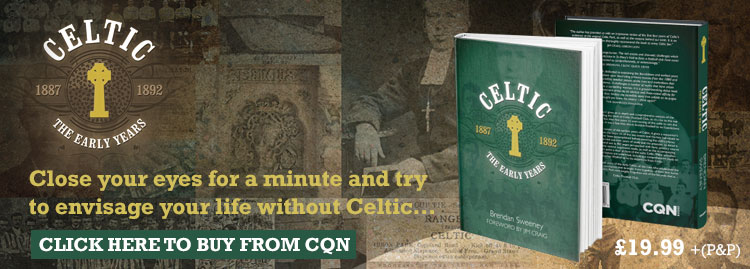Celtic had a successful 1913-14 season winning a league and cup double as well as the prestigious Glasgow Charity Cup, and were preparing to go on tour as the season wound down. This tour would lead to a challenge match for a trophy that would take three quarters of a century to finally conclude. This is the tale of the Ferencvaros Cup…
BOHEMIA
Celtic had declined a friendly match against English F.A cup winners Burnley at Celtic Park because of the close season tour, instead postponing the friendly to midweek in September after the new season was underway. Burnley had won the FA cup for the first time in their history that season beating Liverpool by the only goal in the game and their star was in the ascendency as they would go on to win the first division title six years later after the war ended after 1918.
Celtic had already experienced a few foreign summer tours previous to the one they were about to undertake. The club had received alternative offers but chose a tour of Bohemia including Austria and Hungary over others. A request had been made from Scandinavia, Portugal and the Transvaal but the trip to South Africa was considered too long on the high seas with the certainty of being catapulted into league football on their return without a break.
Celtic left St. Enoch railway station Glasgow at 11 a.m. for London on the morning of 13 May with the “Croy Express,” Jimmy Quinn travelling with the party but not expected to play. Alex “The Icicle” McNair was the only absentee of note being advised not to travel.
A 14 man playing squad and club officials caught the train:
Shaw, Dodds, McGregor, Young, Johnstone, McMaster, Jarvie, McAtee, Gallagher, McColl, McMenemy, Browning and Crone.
Frank Kelly the son of director James Kelly completed the playing personnel. The managerial party led by Willie Maley included Kelly, Dunbar and McKillop. A footballing administrator friend of Maley’s, Frank Morgan from Bridge of Weir completed the line up.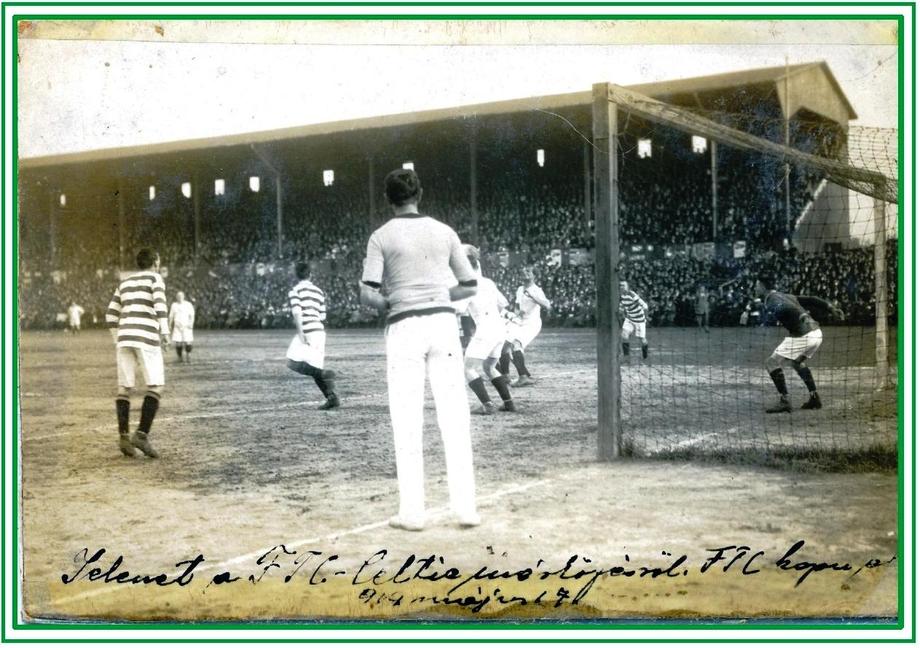
After resting in London overnight the squad left from Victoria Station in the morning to begin the long journey to Budapest via Dresden and Vienna. Travelling through the countryside the players noted Gillingham Football Club stadium and remarked on the stand not being as big as the Grant Stand at Celtic Park. They also passed the impressive Rochester Cathedral before travelling on to Queensboro through the Kent hop fields for their sailing across the channel.
ON THE EVE OF WAR
No review of this particular Celtic tour would be accurately described if it was not placed in the context of the era it was undertaken. Celtic’s Bohemian tour matches were not the only events that were soon to kick off. The biggest conflict in the history of humanity, The Great War was also due to unfold in the coming months.
It had already been mentioned in the Scottish press before the departure to Hungary that it was possible that the tour may have to be postponed if the elderly Duke who was in ill health and 83 years of age died.
Instead it was the Archduke who made the headlines less than four weeks after Celtic’s return in June. The world was jolted into war, the catalyst being the assassination of the Archduke Franz Ferdinand and his wife Sophie in the Bosnian capital Sarajevo by student Gavril Princip. Eastern European politics were complicated around this time because the then combined Austro-Hungarian empire had previously annexed Bosnia and Herzegovina who were still part of the Ottoman Empire.
Did the rest of the world know a conflict was on the horizon? The Evening Times press correspondent travelling with the party referred to military movements and manoeuvres more than once during the jaunt.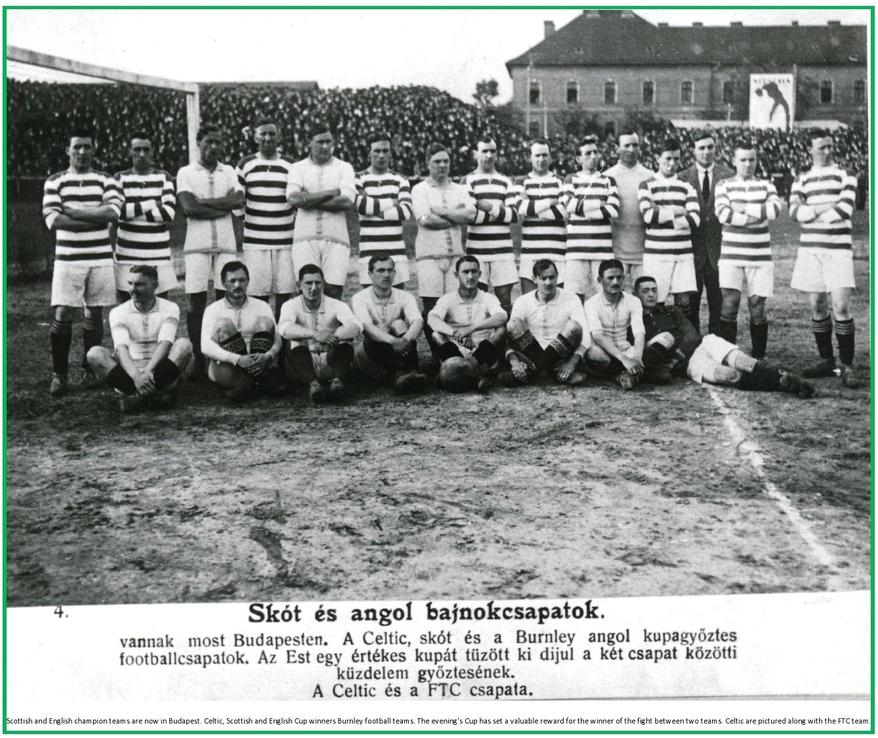
As the party were waiting to embark at Queensboro for the sailing to Belgium he noted, “A fleet of gunboats, destroyers and war like craft and other dark grey leviathans just off the coast in the haze boomed regularly in target practice, spending hundreds of pounds per minute. The booming of the guns helped relieve the tedium of waiting for the cast off.
The “Koningen Regentis” carried the Celtic team across the channel. The bhoys made their own entertainment on board with a singsong led by team captain “Sunny” Jim Young.
Hilariously there was also a singing competition with Charlie Shaw taking on Joe Dodds – the rest of the Celtic players judging the contest and appointing a winner. The victor was Shaw who won without clearing his throat after two grating lines of a song sung by Dodds. The Celtic squad awarded the prize after deciding Shaw could not possibly be worse than Dodds!
Before dark the Belgian coast came into sight and passing Ostend they docked at Flushing before catching the overnight sleeper to Magdeburg arriving for breakfast.
Berlin was to be included in this tour and the Glasgow Observer reminisced about Celtic’s previous visit to Germany before they set off.
“Dresden was the port of call three years ago, but the chances are that Berlin will be the first place of call and we are wondering if the natives remember that famous battle – for it was something else – when Quinn, Young and the other old hands came so near to playing their last game. A great improvement has come over German football in the interval and there will be no occasion to read the riot act on this occasion.”
Travelling on, the party arrived at Leipzig where a 30-minute stop allowed them a quick reconnaissance of the city streets near the station. Unfortunately Frank Morgan had a 45 minute tour of the city streets and consequently missed the train’s departure having to travel overnight alone through Dresden to catch up with the party!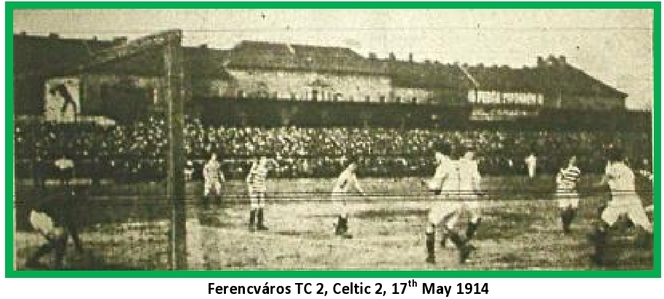
They hugged the left bank of the River Elbe, with glorious scenery either side to Tetschen that was then the junction for Vienna and Prague. Vienna was the destination this time unlike two years previously when Prague was the scene, meeting up with the Celtic legend of the early 1890’s, Johnny Madden who is revered to this day in the Czech Republic for nurturing football in its infancy there.
It was an overnight stop in Vienna before continuing to Budapest for their first football encounter with 2 games there before returning to Austria for another two games.
BURNEY IN BUDAPEST
Coincidently Burnley F.C. were also touring and had arrived in Budapest before Celtic. This had prompted a sparkling idea from the Hungarians who more than probable, were thinking of making money to ensure they could meet the financial guarantee for Celtic’s visit. The Hungarians decided to pair Celtic and Burnley together in a “friendly.” The Burnley officials had agreed to the game and almost instantly the match was upgraded to a cup final. A cup and 22 medals were donated by a Hungarian newspaper (Budapest Quick News), and the details were included in the pre printed programmes.
The Celts rolled into Budapest after a seven hour journey from Vienna completely unaware this fixture had been arranged.
The proposal was put to the Celtic officials and after consideration they were persuaded to accept the challenge after learning that the gate receipts were going to charity. A stipulation was added that a minimum of £25 was laid aside for Scottish good causes. A public holiday and good weather as well as the footballing reputations of the two cup holders in Scotland and England ensured a healthy crowd of 25,000 at the home of Ferencvaros.
Previous to the Burnley match the Celts had a warm up first game against Ferencvaros drawing 2-2, with the refereeing being the main point of focus in the match report with Celtic having enough chances to win 2 games.
The Hungarian economy was depressed at this time because of the recent Balkan war and some of the unemployed youth had invented a novel way to join the 20,000 crowd for the first game. 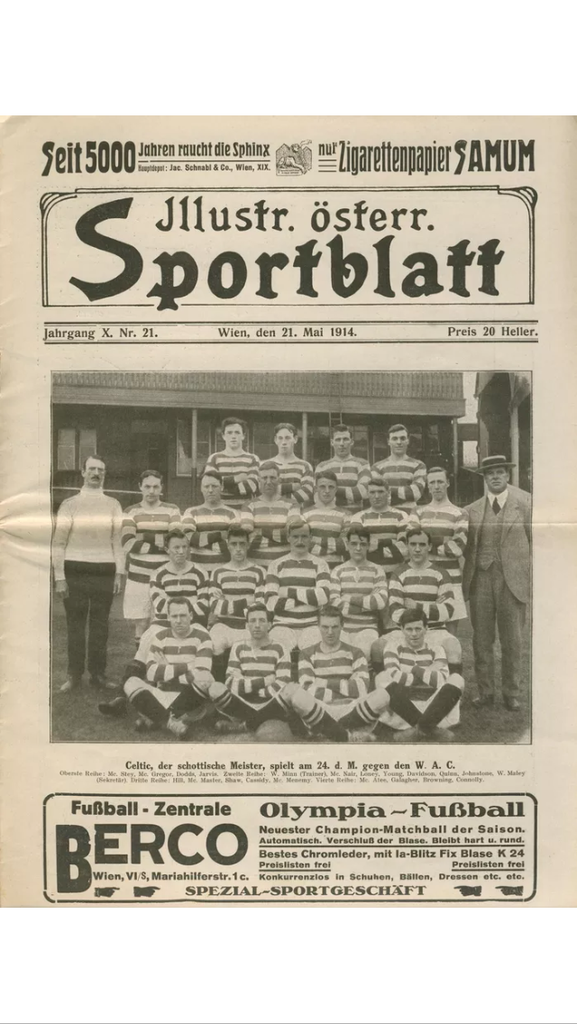
The Evening Times observed, “As the taxi drew up to the ground with the team basket, a horde of youths had it on their shoulders before the wheels stopped. Initially suspected as robbery by Celtic trainer Quinn, he reacted promptly but his fears were eased. A bee line was made for the entrance and when the gate was cautiously opened thirty or forty managed to get round under or over the basket. The officials laid about with fists and sticks……..It was all in vain. Quite twenty out of work enthusiasts swept into the ground many of them black and blue from the blows handed out.”
The players were staying at the Hotel Continental and strolled down Andrassy Boulevard enjoying the street cafes on the Monday after their inaugural tour match against Ferencvaros. By chance they encountered some of the Burnley players and stopped for a chat. The men from Yorkshire Boyle, Halley and Taylor were astonished to hear Celtic were their opponents three days later on Thursday. They had an inkling a game was in the offing but not so soon.
The Burnley match itself was to be played like a cup final turning into a roughhouse before the finish. On a baked ground with occasional green patches Celtic turned out in a solid green strip with white flashes that just happened to be very close to the colours of Ferencvaros.
In a double coincidence Burnley turned out in a blue and white strip, the colours of city rivals MTK Budapest!
In the first half Celtic played with the strong wind behind them, both teams being unaccustomed to the smaller, lighter ball. Celtic pressed constantly with Dawson the Burnley custodian nowhere near an Andy McAtee drive that rebounded off the post with a loud report echoing throughout the stadium. After another good chance from McColl, Gallagher was barged in the back from behind in the art of shooting with the goal at his mercy.
“He got up from the grassless pitch minus several inches of skin on his left side.”
Later in the game he was to receive another similar challenge that took more skin from his body. Boyle the Burnley assailant had the good manners to alternate and try his right side this time, with Patsy’s arm, body and legs getting damaged in the process.
Charlie Shaw in goal for The Celts never handled a shot in the first period, Celtics penalty goal by McMenemy being the only score courtesy of Gallagher’s initial assault.
Burnley were smarting from being outclassed in the first forty five and now with the wind at their back tried to get back into the game. Celtic held their own without enjoying the sustained pressure they had enjoyed earlier. “Burnley huffed and puffed and were desperately trying to save face by claiming for anything and everything for their team and for offside against the Celtic team,” was the view of the Glasgow Observer.
The Observer also reported, “The ball was sent in and hit Sunny Jim Young plump on the chest with a sounding smack. One or two of the Burnley forwards claimed a penalty kick on the off chance, just as they had done at other times, and to the astonishment of both teams their claim was granted.…..It was rough on Shaw to be beaten by the first shot that came his way in 65 minutes.”
Burnley redoubled their efforts for a win smelling opportunity, but were thwarted by the Celts who reduced them to one solitary chance near the end after a mix up between Shaw and a defender.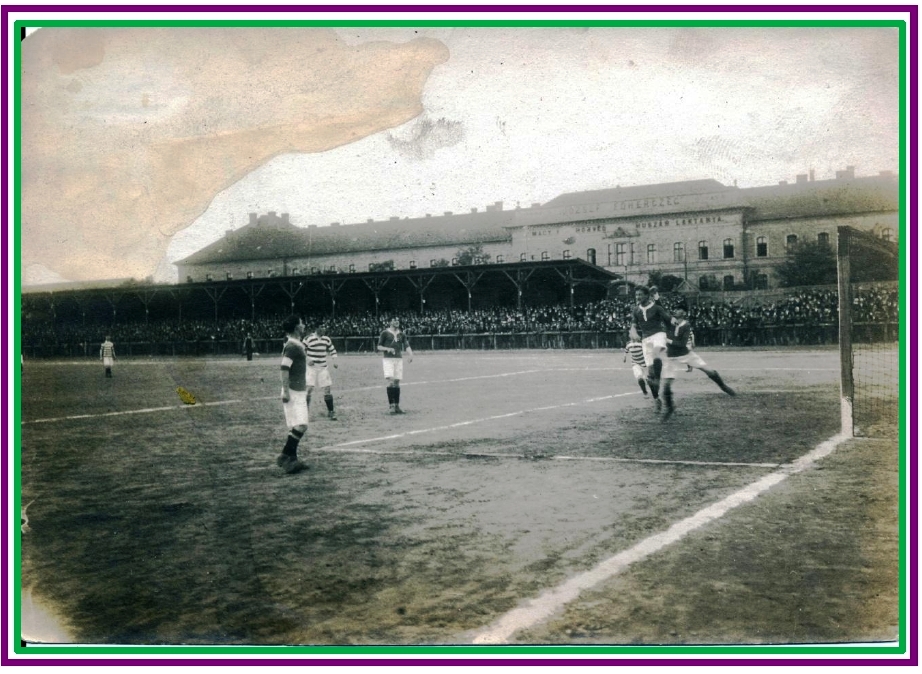
Again the press reported, “The last 25 minutes were more fierce than any cup final as the crowd cheered wildly and impartially as the ball was taken from end to end of the field……..Once, both trainers were on the field at the same time to attend to their man.
It is impossible to give a description of the last 15 minutes of this remarkable game where some of the players mistook each other for the ball and two came to blows.”
EXTRA TIME OR TOSS OF A COIN?
The final whistle blew and the referee signalled for both teams to switch ends in the dwindling light and play extra time. A Burnley player shouted out to Celtic’s Peter Johnstone, “Let’s play even a quarter hour more. I want to have it out with you.” Peter replied,“There’s no need to wait. Come on now!”
The other players were quick to react and rushed in to separate the feuding pair who had become entangled, while others were wrangling in midfield similarly.
The pugilists on each side were keen to re-start the game and decide it in any fashion not particularly caring whether football was involved. The politicians and cool heads were advocating a replay at some other time and venue whether England, Scotland or on the border.
The referee was chattering away to the comprehension of no one because of the language barrier, meanwhile the crowd were going ding dong stamping their feet on the wooden planks of the stand trying to incite additional drama to supplement what had already gone.
Meanwhile the club officials of both sides were attempting to discourage those in favour of further battle to take a sane view of the whole affair. After further recriminations and skirmishes the players eventually separated and made their way to the pavilion.
In any case with Celtic having to be cajoled into playing the 90 minutes originally, two hours play was a bridge too far. Neither of the clubs had the appetite to provide the Pests and the Budas with further sport taking into account what had occurred during the game.
Before the dust had agreed to settle the club officials had got together to toss a coin with the winners (Burnley) having the right to take temporary charge of the trophy until the rematch settled ownership.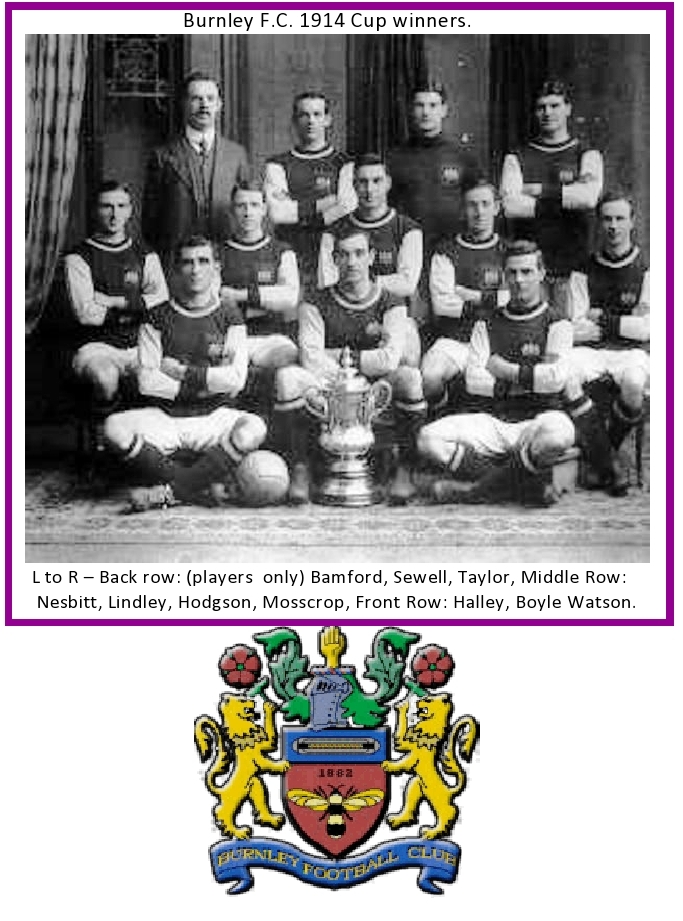
To Burnley’s dismay and Celtic’s too the sponsor of the trophy would not allow it to leave Budapest until one of the teams had won it outright’ whether that was now, the day after or on next years tour.
The cup – in the shape of a lighthouse – around 23 inches high, studded with gems sat invitingly on the track outside the pavilion, guarded by seven Hungarian policemen with swords in their scabbards, displaying enough menace to prevent its removal by anyone with such a desire!
There was talk of the medals also being withheld although these were eventually distributed among the players before they left the stadium.
THE 6-2 GAME
The Celtic party left the Cup in Budapest and headed to Vienna for more opposition winning 6-2 in what ended up exhibition football.
On the return journey between the two historic cities, again war manoeuvres were in view as it was noted that, “On the Journey to Vienna we saw a group of soldiers practising the erection of a temporary bridge over the Danube.”
The Hungarians had proposed a rematch after Celtic’s tour games in Vienna but the Celtic party were of the opinion that a 14 hour round trip to Budapest added to the journey home was not in the interests of the players.
Initially the Burnley directors were keen to come to Celtic Park and play for the Ferencvaros Cup and also make this match serve as the friendly that was under consideration as the two association cup winners in their own countries. This idea cooled when home advantage in what would now be a grudge match was not to be given away easily. A toss of the coin would allow the victors to make a venue choice in their favour.
HOMECOMING
Celtic returned home and the players got free time before training resumed for the new season ahead. Jimmy McMenemy and Joe Dodds spent some time at the Gee Gees on the sands at Ayr while Sunny Jim preferred watching the crack golfers at Prestwick with Harry Vardon being victorious for the sixth time. Patsy Gallagher, Celtic’s top scorer by some ten goals that season, favoured a journey home to Ramelton in County Donegal.
The date had been set for the return match, a weekday in September to accommodate league fixtures; Tuesday the 1st September.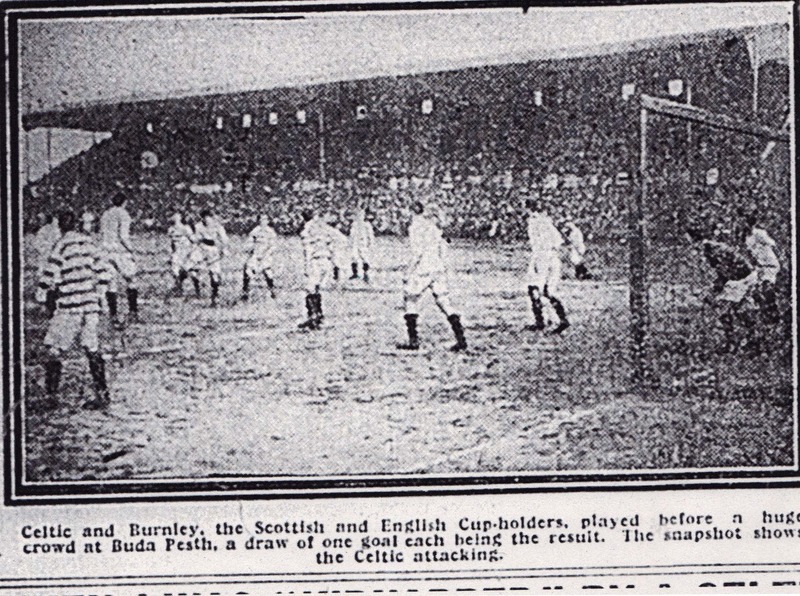
The Austro-Hungarian Empire threw a dark veil over the continental Europe by declaring war on The Kingdom of Serbia after they partially refused an ultimatum which in turn drew the western nations and the Russians into the world’s first Great War.
The war had already ignited across mainland Europe with action in Antwerp, Heligoland with the Germans only thirty miles from the outskirts of Paris. Meanwhile the Russians were attacking Galicia with the intention of marching on Berlin where Celtic had vacated only months previously.
The Scottish Football Association had an emergency meeting on the day of the Burnley match at Carlton Place with the discussion being the necessity to abandon all football until hostilities had ceased. A deputation was sent to London on the Thursday to canvass the views of the association there. Other sports including Rugby Union had already capitulated.
TURF MOOR
Unsurprisingly Celtic lost the toss for the re-match with the venue being Turf Moor in Burnley. Celtic travelled south by train to finally settle ownership of the Ferencvaros Cup.
The twist in this tale is that no one was to ever have ownership of the cup. It never made its way across from Hungary and two unsubstantiated explanations were, it was sold to help the war effort; and also it was raffled to help the Red Cross in their role in the war.
Still the honour of the eventual winners of the battle that took place in Budapest was up for grabs. Celtic lined up at Turf Moor with the same side that took to the field in Budapest.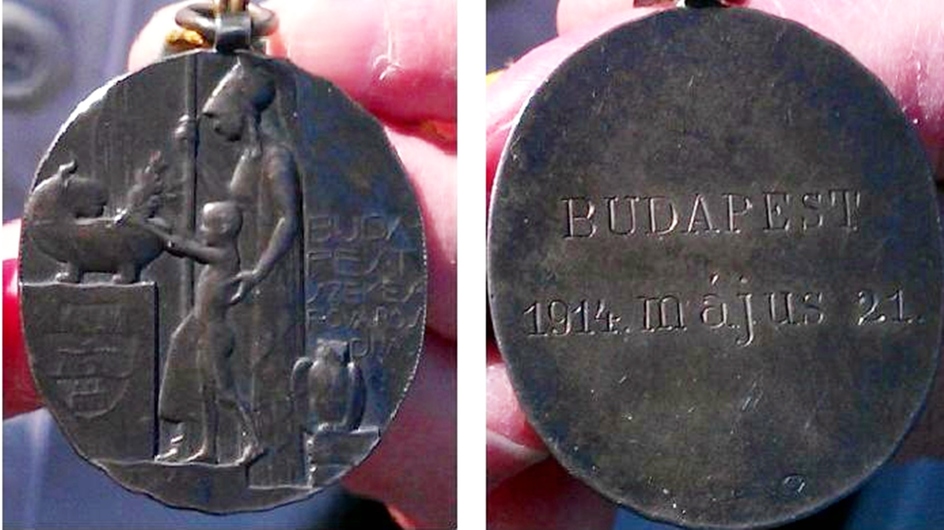
Turf Moor would not be a strange venue for some of the Celts as Shaw, McNair, Dodds, McAtee and McMenemy had starred here the previous season for the Scottish League select. Burnley fielded a strong team too with a broken arm suffered on tour enforcing change to their line up.
Celtic were not to disappoint although the game plan went askew with the loss of Peter Johnstone with a foot injury resulting in Celtic playing half the game with ten men. This was a real handicap as it had been reported, “Johnstone was the one player to catch the eye in Budapest and Vienna.”
Celtic won the match and the honours after McColl put Celtic ahead after deadlock at half time. Patsy Gallagher added a second securing a deserved away victory before Burnley scored a consolation near the finish with a penalty for handball!
Reporting on the contest The Glasgow Evening Times pronounced, “Celtic’s cleverness prevailed over Burnley’s weight and dash…”
Another Scottish report stated, “Gradually the Celt’s individual cleverness and cute combinations wore down the Burnley defenders.”
Celtic returned to Glasgow with honour intact and colours flying high although no silverware boarded the return train.
CELTIC’S FALLEN HERO
The war was now gathering intensity and the principal hero of the battle of Budapest, Celt  Peter Johnstone (Private 285250) volunteered for service for his country seeking action rather than the safety and solace of the shipyards.
Peter Johnstone (Private 285250) volunteered for service for his country seeking action rather than the safety and solace of the shipyards.
He regularly travelled north to play for Celtic during his conscription but he volunteered once again for a change of battalion to expedite him into action on the battlefront. He was chosen for a special raid on a chemical factory and lost his life in the battle of Arras in May 1917, reported missing in action. His body was never found and a plaque in his memory can be found in bay 8 of the Battle of Arras memorial in the cemetery at Fauborg d’Amiens in France.
In his home village of Glencraig Fife, the local Celtic Supporters Club secured some land and a fitting memorial was erected recently in his name, commemorated with a well attended service.
The Ulloi Uti Stadion in Budapest, the home of Ferencvaros F.C. that hosted the initial encounter between the two teams was remodelled and named “The Albert Flórián Stadion” in recognition of the famed Hungarian footballer Florian Albert. This stadium saw its last game in 2013 when it was rebuilt and renamed, selling its soul for corporate sponsorship like many others throughout the world. The Groupama Arena does not have the same ring.
Florian Albert won the European Footballer Of The Year in the season when Celtic won the European Cup in 1967 in Lisbon.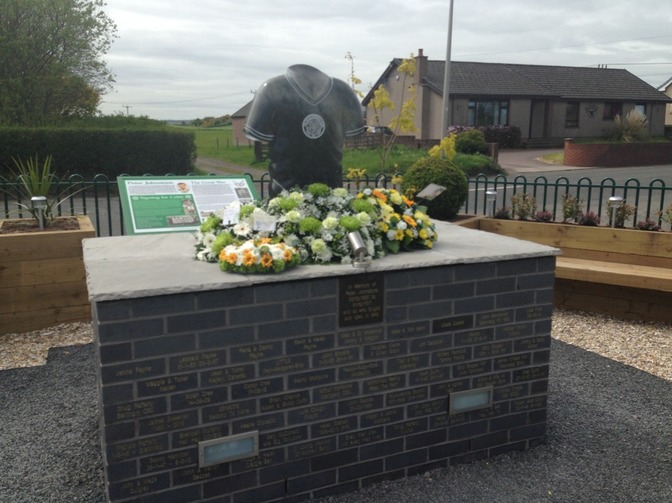
Curiously Celtic were drawn against Ferencvaros in the first round of the European Cup defending the trophy as winners in 1968. Sport and politics again combined to collide and a large portion of the eastern European teams withdrew from the tournament.
Russian tanks had rolled into the Czechoslovakian capital Prague and the upheaval of this event again created political discord.
A re-drawn tournament pitched Celtic versus French champions Saint Etienne who won in France in the first leg, Celtic salvaging the tie by scoring four at a boisterous Celtic Park to win the two legged affair outright.
To finally get a conclusion of a sort to the Ferencvaros Cup saga, Ferencvaros F.C. presented Celtic with a porcelain vase on the occasion of the clubs centenary in 1988. After Celtic clinched the league flag at Celtic Park against Dundee near the end of the season, Celtic chairman Jack McGinn took possession of the memento in memory of the game in 1914. The Hungarian club’s president Zoltan Magyar presented, not The Ferencvaros Cup but The Ferencvaros Vase to Celtic.
A modern replacement for an ancient lost original.
Written by Iain Reynolds for CQN
————————————————


